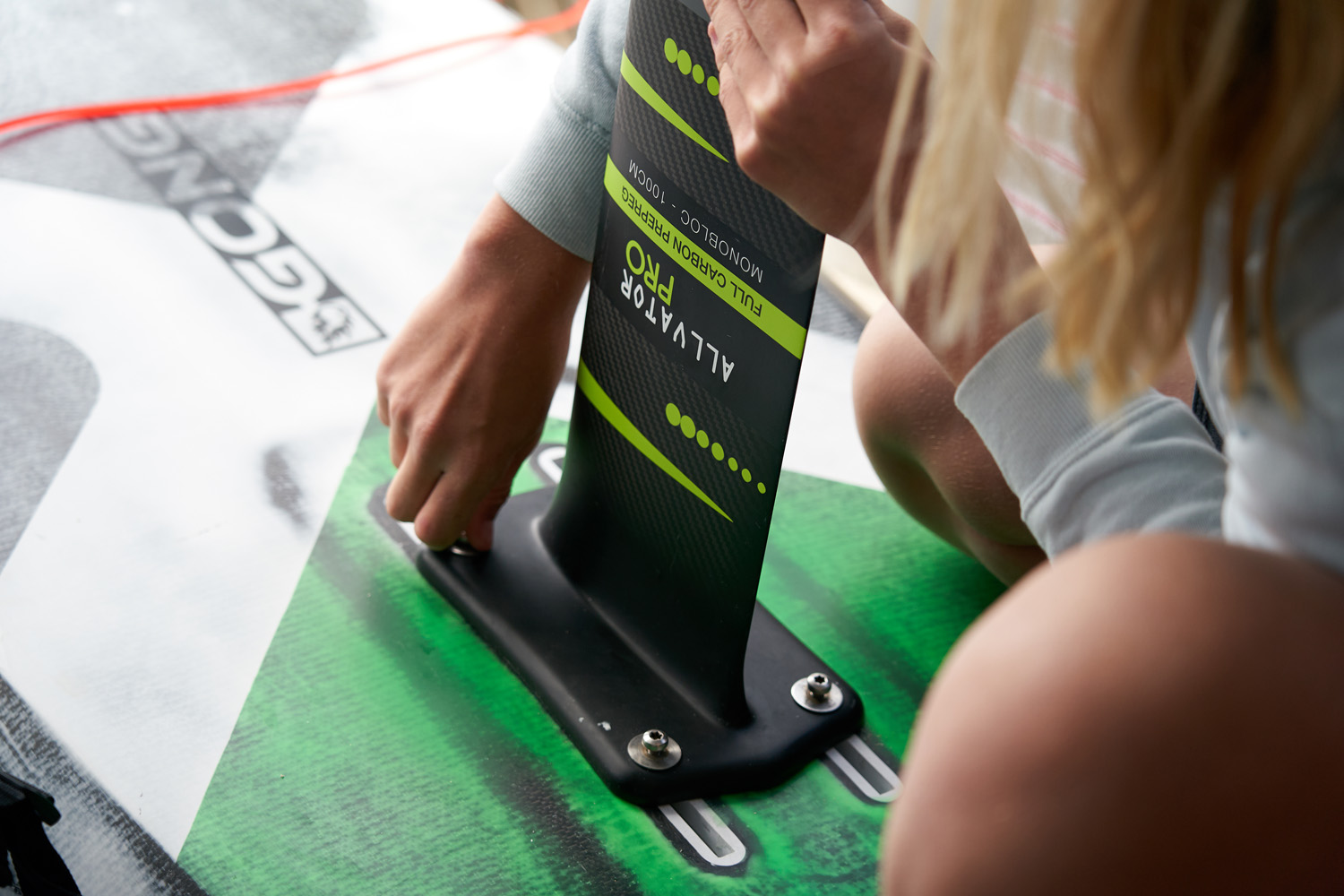GEAR: WING FOILS !!!
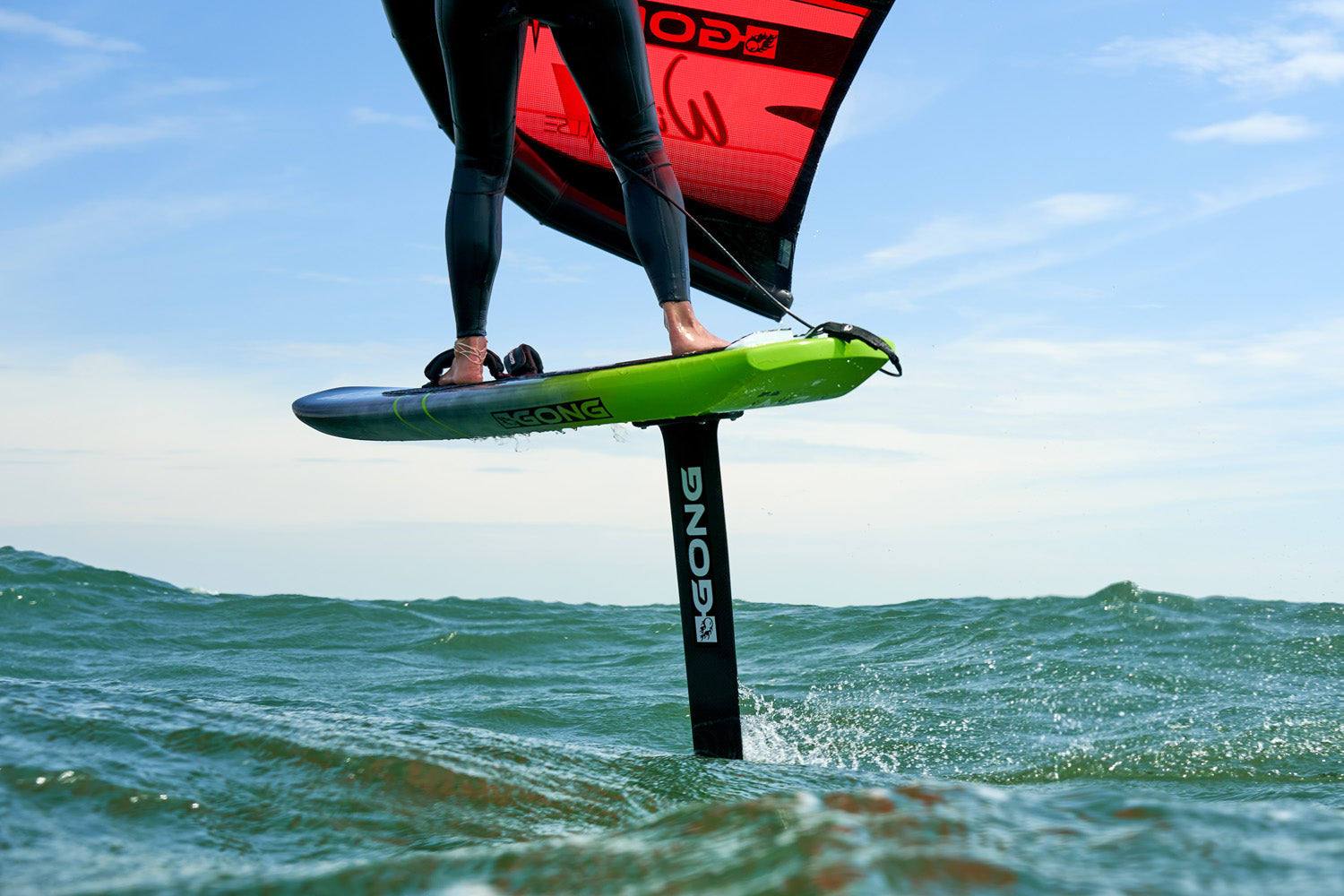
Here is a summary of the different points you need to keep in mind to choose the right Wing Foil, whether you are a beginner, progressing or pro.
For whom?
- Beginners without experience: GONG Wingfoil beginner.
- Athletic beginner: GONG Wingfoil Allvator Rise alu.
- Beginner in Wing but already a foiler: GONG Wingfoil Allvator Curve pro black alu/carbon L.
- Experienced looking for the high-performance Swiss Army Knife: GONG Wingfoil Allvator Curve Full Carbon.
- Experienced who wants a high-speed Wing foil: GONG Wingfoil Allvator Veloce Full Carbon.
For what?
- The GONG Foil Wing Beginner is ideal for smooth progress with its two lengths of masts. It will fly with great stability, even at low speed.
- The GONG Wingfoil Allvator Rise alu flies with great stability, even at low speed. With its long mast length, everything becomes easier in flight because you have a significant margin. Fewer touches = fewer falls.
- The GONG Wingfoil Allvator Curve Alu/Carbon opens the door to high performance at a low price.
- The GONG Winbgfoil Allvator Curve Full Carbon is perfect for turns, waves and transitions. Its high mast allows you to put a maximum of angle in the curves and its wings are the best compromise speed/curves.
- The GONG Wingfoil Allvator Veloce Full Carbon gives you the highest possible speeds with an important lift foil. Perfection to radicalize your Wing practice.
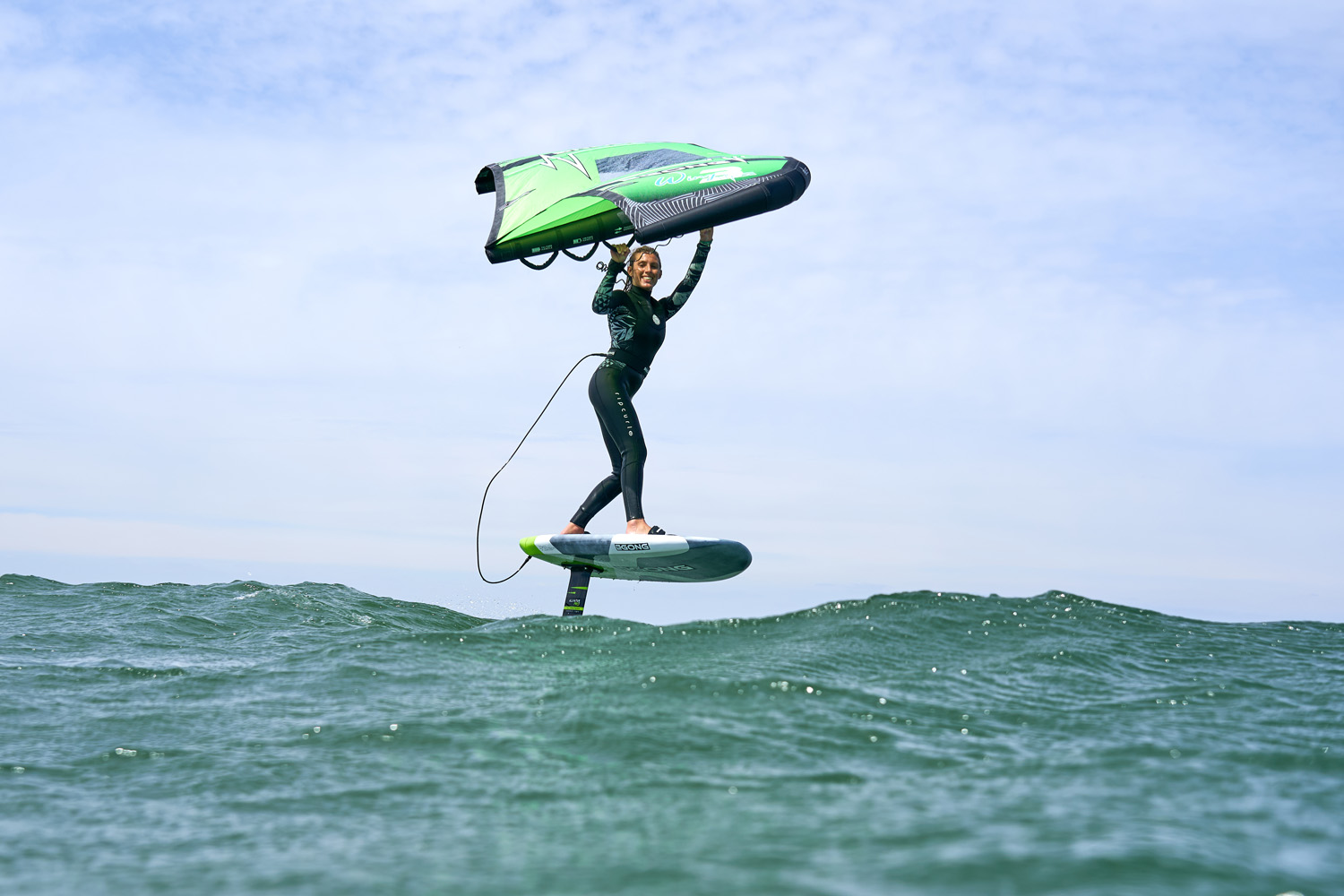
What sizes of foil wings?
Beginners will have the fastest progression with an XL front wing (any rider between 50kg and 100kg) and a 45cm stab Surf. If you are shy, start with an XL Rise Wing. If you are skilled, start with an XL Curve wing.For beginners:
In the Rise range: very easy and efficient wings at low speed:- XL for everyone and all wind speeds.
- XXL for very large riders and unstable winds below 15 knots.
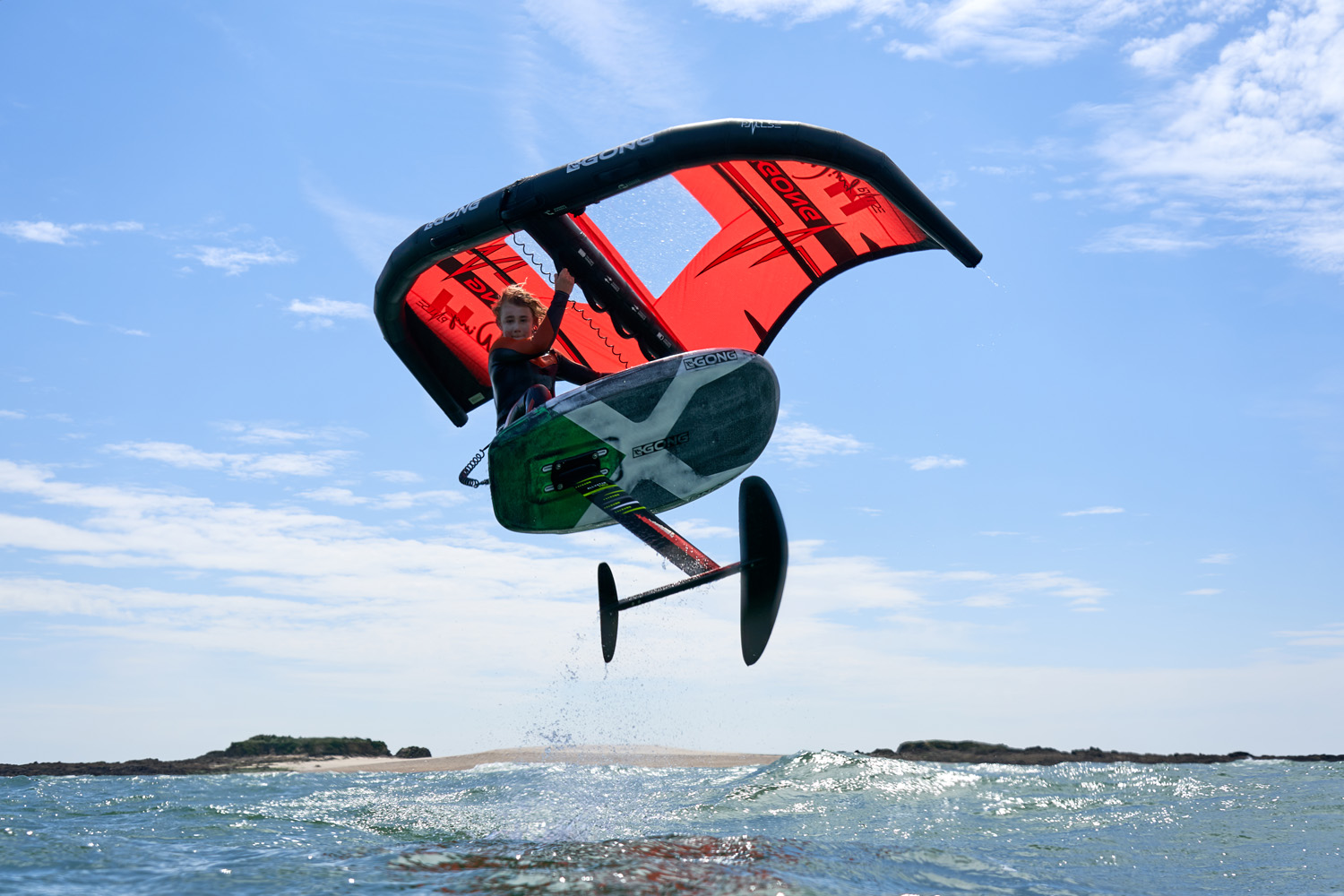
- M for those under 50kg and/or in strong winds.
- L for the 50kg -> 75kg and all wind speeds.
- XL for those over 75kg and all wind speeds.
- M for under 50kg and/or in strong wind.
- L for the 50kg -> 75kg and/or in strong wind.
- XL for those over 70kg -> 95kg and all wind speeds.
- XXL for those over 90kg and winds below 15 knots.
Which foil mast?
Except when launching, you will have everything to gain with a long mast. More length = more margin = easier = more performance. Contrary to kitefoil, in Wing you don’t have much opposition to the wing because it pulls gently. So, we put little wind angle to the mast. So, mastering a big mast in Wing is not a problem. And as the boards used are much bigger than in kitesurfing, the inertia is more important. So, your foil is less crazy. Everything is calmer. So don’t be afraid of a long mast. In the chop, in the transitions, in wind holes, a long mast will be ten times more pleasant.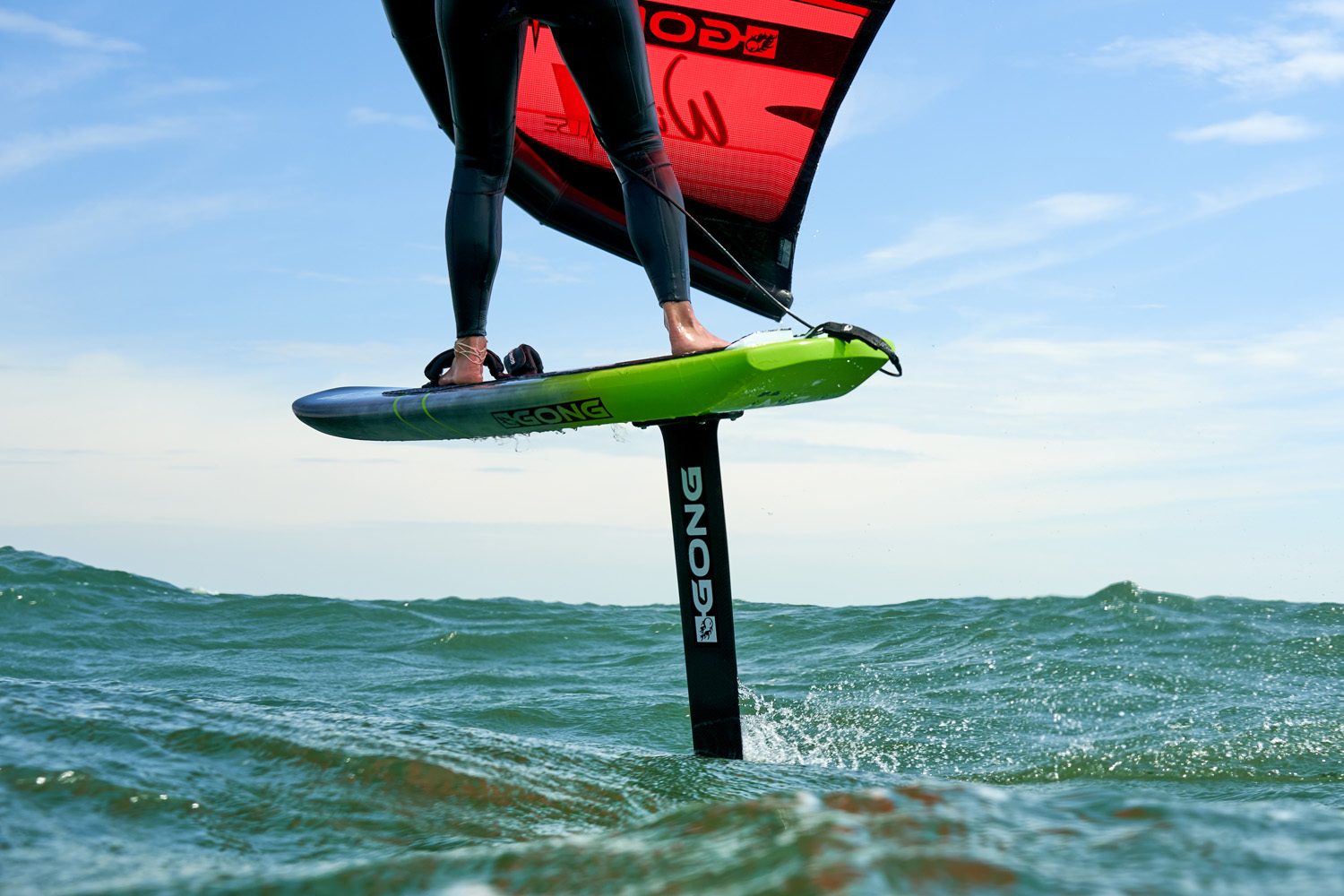
What technology?
You have two main choices: 1/ Aluminum foils: Aluminium foils are those with an aluminium structure: platinum, mast, fuselage. But the wings are generally made of fiberglass, or glass plus carbon. It is easy, quick to produce, and not expensive. Ideal for beginners but limited in dynamism and therefore in performance. The biggest disadvantage is corrosion, which requires good maintenance. The multiple pieces have inevitably some looseness.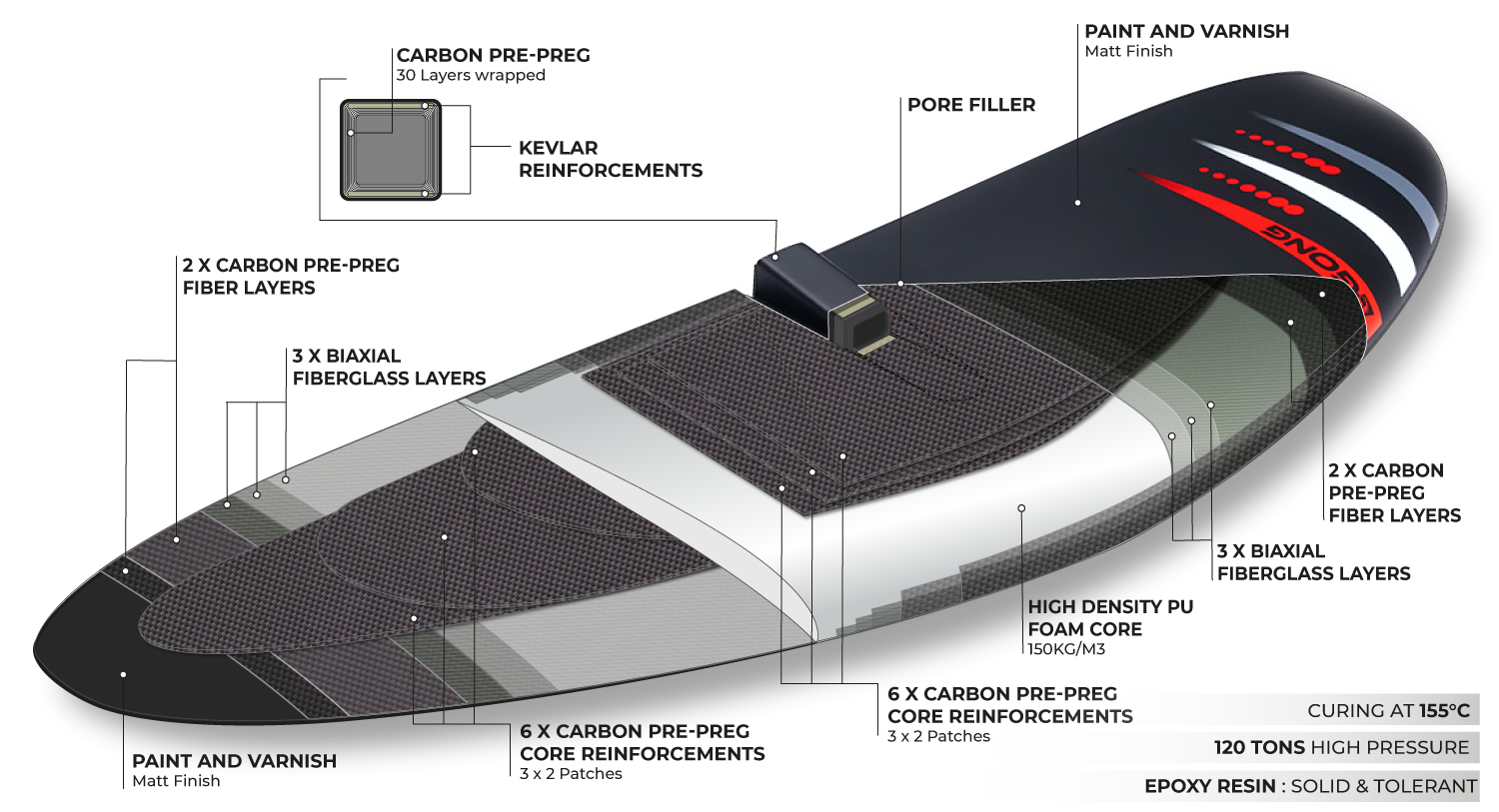
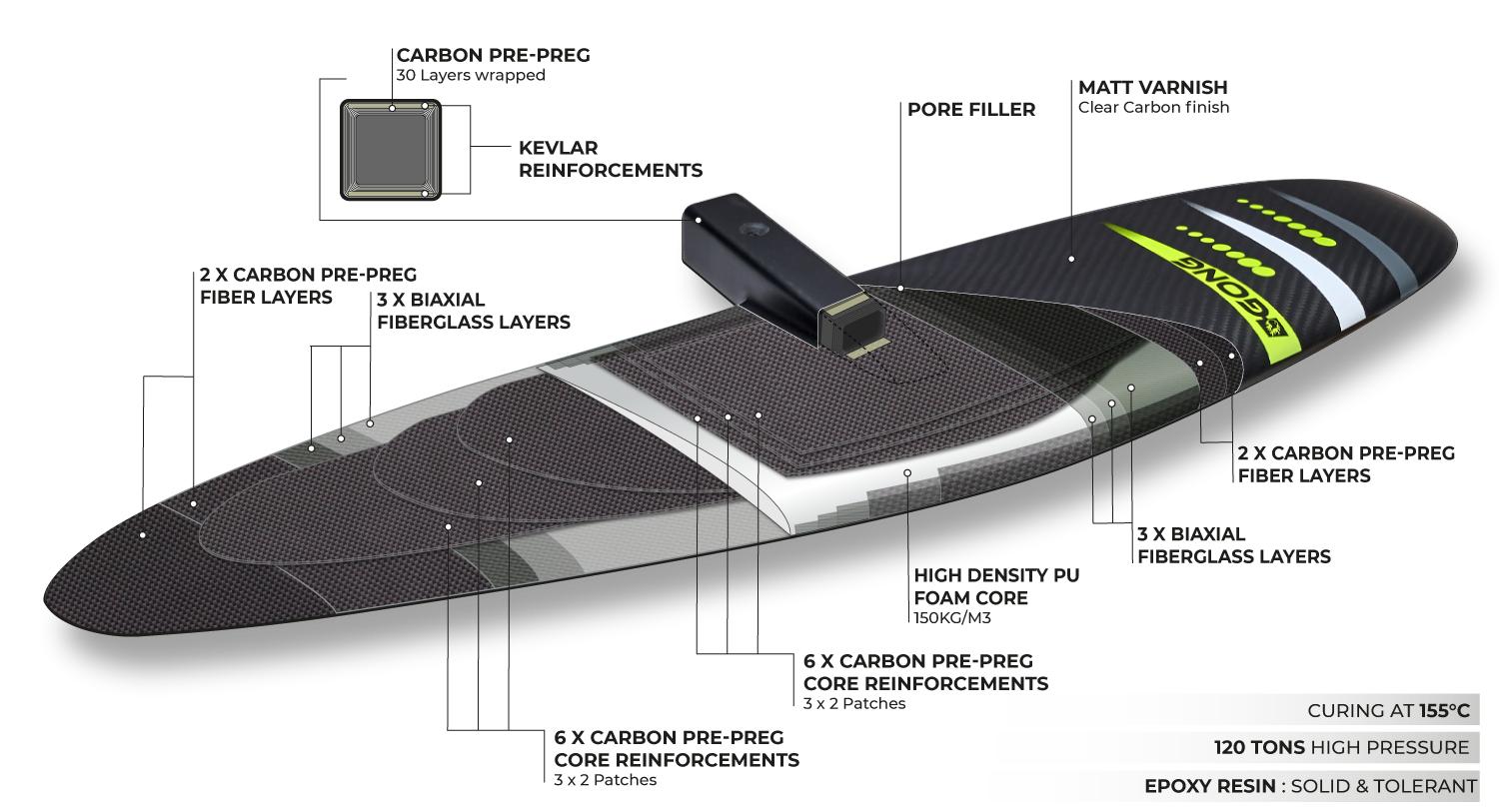
- The GONG FOIL WING BEGINNER: the foil pack with two masts, ideal for progressing in wing.
- The GONG WINGFOIL ALLVATOR RISE ALU: the essential foil for your first steps in Wing.
- The GONG WINGFOIL ALLVATOR CURVE ALU/CARBON: the versatile and economical wing foil.
- The GONG WINGFOIL ALLVATOR CURVE FULL CARBON is perfect for turns, waves and transitions. Its high mast allows you to put a maximum of angle in the curves and its wings are the best compromise speed/curves.
- The GONG WINGFOIL ALLVATOR VELOCE FULL CARBON gives you the highest possible speeds with a highly lifted foil. Perfection to radicalize your Wing practice.
What quiver of wing foils?
You don’t need a lot of foils in Wing, because often you will do everything with just one set of foil after reaching a certain level. But the development of trends in racing, surfing, freestyle etc… will inevitably lead you to switch from a foil for everything to a foil for this or that program. The huge advantage of the GONG range is that everything is compatible. You can start with an economical foil and go from a crescendo of practice to a totally unreasonable one with a crazy quiver of wings ?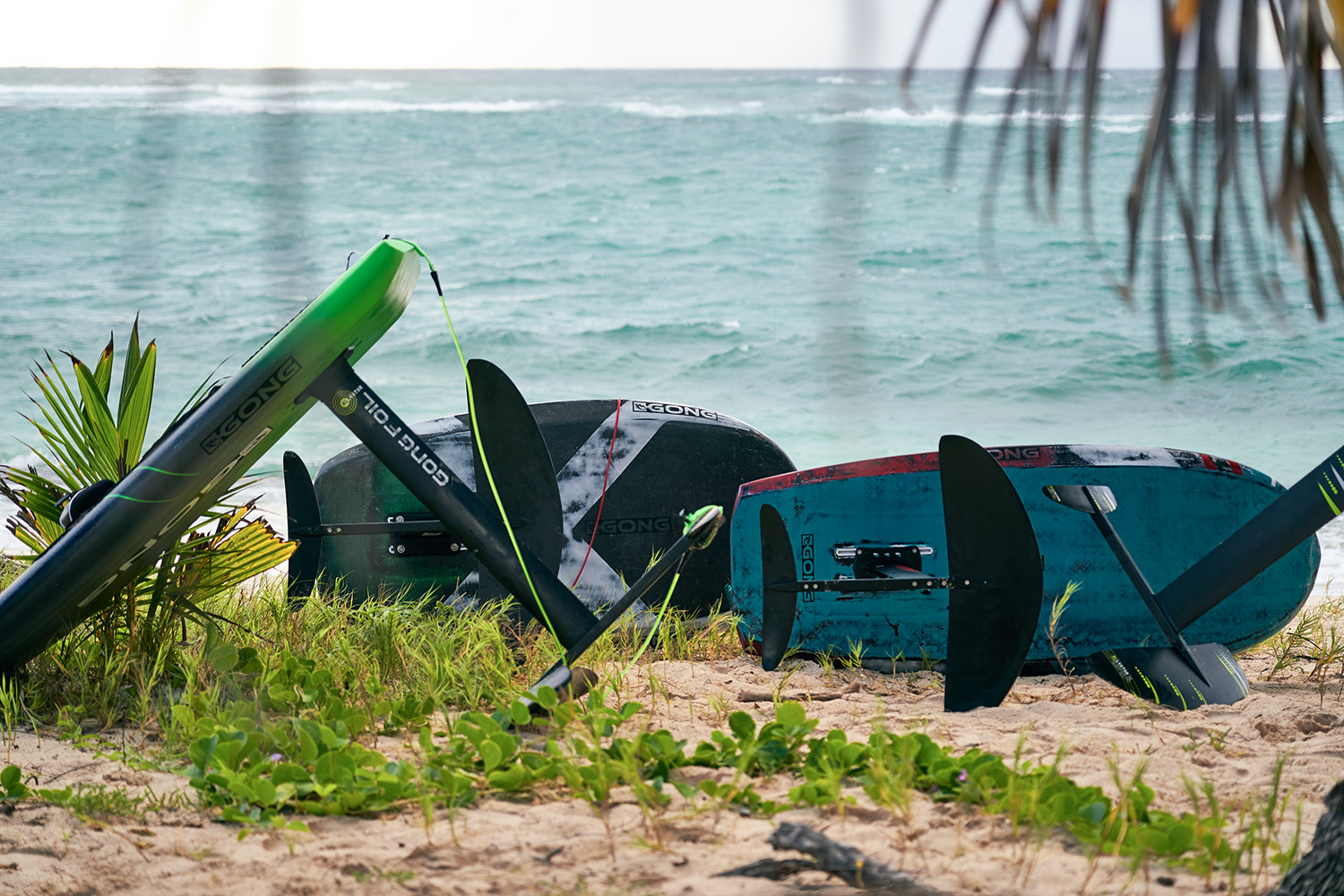
Foil positioning?
For the GONG foils, place the top plate on the back third of the US rails. The more you move it forward, the more it lifts the board. The more you move it backwards, the more the nose of the board dives. Be careful not to move it too far forward. We often tend not to let the rear foot work, especially when we come from a kitefoil background. However, moving the foil back a little forces you to put more weight in the back foot and gives a more harmonious attitude and reduces the effort.